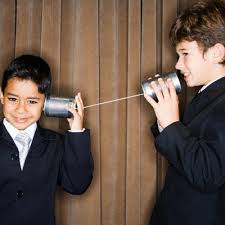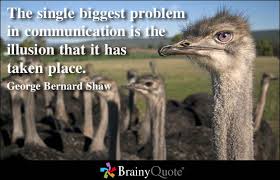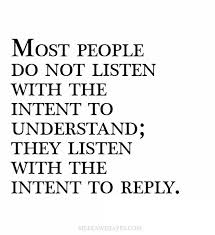One of the most frustrating things for most professionals is communication. There is not enough, it is not clear enough, or there are misunderstandings. I don’t recall ever hearing anyone complain about having too much communication in a partnership or team environment.
MORE COMMUNICATION
In my experience not enough communication has been a big problem in many ways. If your plan is not adequately communicated it cannot hope to be enacted. If your goals are not adequately communicated they are not likely to be met. It can hurt your company culture and make your team feel like they don’t matter, are not included, and left out in the cold.
As leaders we sometimes forget that those around us do not come by information by merely being in our presence. We have to communicate clearly, often, and effectively to succeed.
COMMUNICATION PLANNING
You plan everything else in your day – your tasks, schedule, and meetings. Why not plan communication? Start with once per week – what do I need to communicate to my team this week? How do I most effectively communicate the message? When will I communicate it and by what means (email, meeting, memo)? Add it as a weekly task on your list to spend 10 or 15 minutes practicing this skill and planning a communication. Tell your team what you are doing and ask for feedback. Did the message come through clearly? Was the means appropriate for the message? Was the timing right?
Example – there are organizational changes that need to be made within the company. How might that message best be communicated? Memo? Meeting? Email? Depending on how big this change is may depend on what is right for your group. An email may come across as flippant and detached, whereas a meeting with the group that allows discussion may go over better (active instead of passive).
WHAT IS COMMUNICATION?
With modern technology, we are more connected than ever before. The transfer and spread of information is incredible. Social media like Linked In, Facebook, Snap chat, and Twitter coupled with email, texting, and the internet (don’t forget webex). The amount of information available to each of us instantly at any time is staggering. So why are we so connected and still have so much trouble communicating? It has been suggested that our communication skills are even worse now than before the technology boom.
PASSIVE COMMUNICATION
Social media is a form of passive communication. Most of the time you are not having a real time interaction with the person on the other end, but you are reading (or viewing) what they have posted. You may then provide a like or comment to what you just viewed. There is no expectation of a response to a post or upload, and most of the time you will not get one.
ACTIVE AND SEMI-ACTIVE COMMUNICATION
Texts and emails can be active or semi-active communication depending on the situation. In the workplace, email is often treated as active communication meaning that you are expected to have your email open all day, and be actively reading and responding to emails even when away from your desk or on the road because of smart phones. Although considered more casual, text messages are treated much the same way in today’s business world. How many times has someone become upset with you because you did not read and respond to their email or text message within a few minutes?
EMAIL AND TEXTING
Many misunderstandings happen via email and text. Why is this so different? Because we have limited information to draw from (only the written word), and absent are voice inflections, facial expressions, and body language. With limited information available, it is easy to have a misunderstanding – and let’s face it – most people are not fantastic writers. Many times I have thought after reading an email “how can that person say that?” or “I can’t believe it! We talked about this and everything was fine – now they are railing me!” When I go to talk to the writer of the email, their intent was something completely different than the way it was perceived by me, the reader. Use caution when communicating important or sensitive information via email or text – many times a face to face discussion or phone call first will smooth the way with a follow up in writing if necessary.
FACE TO FACE OR PHONE CALL
With all the technology available to us, meeting face to face or picking up the phone is becoming increasingly rare. Don’t get me wrong – I love that webex means I can have meetings with people far away without fighting traffic. But there really is no substitute for seeing someone face to face – reading their facial expressions and body language. A phone call is the next best thing – you can hear the tone and inflection of the other person’s voice. All of these things play a part in clear communication and active listening.
ACTIVE LISTENING
In the United States, we are an individualistic society based on freedom of the individual. It is a wonderful thing – but it causes problems when other people are involved. By definition communication involves more than one person. What we often do when we should be actively listening, is we multitask. We are hearing what the other person is saying, weighing it, thinking about the consequences or impacts, considering whether we believe it, and forming our response, advice, or defense. Wow that’s a lot of stuff and none of it is really listening. Active listening requires that we slow down a little bit – stop multitasking for a while and really concentrate on the person talking. It is harder than it sounds. Most of us are so accustomed to multitasking that it is difficult to stop. Think about the people you know that you would consider “great listeners”. Are they high energy, amazing multitaskers? Not usually. The ones I would call great listeners have a slower pace, more of a one thing at a time approach. For those of us to whom this does not come naturally, this takes practice – a concerted effort to slow down and listen.
SUMMARY
No matter what we are doing, no matter your industry, we are all still dealing with people. People have their own thoughts, ideas, perceptions, and feelings. As leaders we need to be cognizant that what we do and say (in writing or the spoken word) is noticed and felt deeply by those around us. Communication is one of the most important ways we can lead effectively.
1. Set aside 10-15 minutes a week to plan communication
2. Tell your people what you are doing and ask for their feedback
3. Communicate clearly, often, and in the best way for the situation
4. The best way is not always the easiest or most efficient for you
Being a good leader is not about you – it’s about your team!



